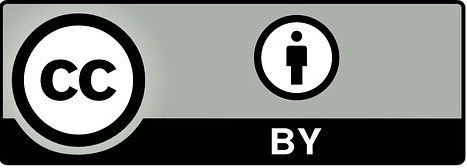Military Hierarchy in the Leoncio Prado Military Academy of The Time of the Hero (1963)
DOI:
https://doi.org/10.17398/2660-7301.43.157Keywords:
Literary analysis, Space, Otherness, Violence, Military Hierarchy, Characters, Novel of the boomAbstract
This literary work of Mario Vargas Llosa captures an asymmetrical configuration in his characters. This is distinctive of the modern condition that justifies its ontological instability, as noted by Milagros Ezquerro. In turn, it is understood by the context in which it develops: dictatorial stage that is going through in Peru and Latin America in the second half of the twentieth century. Returning to this premise, this paper will aim to base which are the enclaves that delimit and converge the constitution of the hierarchies that adopt the responsible authorities and the cadets that oscillate in the military universe of the novel. To do this, it will be corroborated by the notion of violence that fluctuates Walter Benjamin, the conception of space by Iuri Lotman and the paradigm of the military universe addressed by Herbert Morote. These categories will be interwoven to demonstrate with hierarchical triangles the implication that was achieved with this type of instruction.
Downloads
References
BAJTÍN, M. (1991): Teoría y estética de la novela. Barcelona, Taurus.
––– (1998): Estética de la creación verbal. Ciudad de México, Siglo Veintiuno Editores.
BENJAMÍN, W. (2001): Para una crítica de la violencia y otros ensayos. Iluminaciones IV. Madrid, Taurus.
BERISTÁIN, H. (1997): Análisis estructural del relato literario. Ciudad de México, UNAM.
CERCAS, J. (2012): «La pregunta de Vargas Llosa». En Vargas Llosa (2012: 473-498).
CHOCANO, M. (2006): «Caudillaje y militarismo en la tradición interpretativa de la historiografía peruana». Iberoamericana, VI.22, págs. 7-21.
DÍEZ-ALEGRÍA, J. M. (1980): Rebajas teológicas de otoño. Bilbao, Desclée de Brouwer (3.ª ed.).
EZQUERRO, M. (2012): «Escribir en el siglo XXI» (en línea: <https://bit.ly/2vCR5xX> [consulta: 31 de enero de 2020]).
FONTAINE, A. (2013): «¿Dónde está Vargas Llosa? A propósito de La ciudad y los perros». Alicante, Biblioteca Virtual Miguel de Cervantes (en línea: <http://www.cervantesvirtual.com/nd/ark:/59851/bmc4b4s4> [consulta: 9 de enero de 2020]).
GALLAGHER, D. (2011): «La fecunda aventura». Estudios Públicos, 122, págs. 589-597.
GNUTZMANN, R. (1992): Cómo leer a Mario Vargas Llosa. Madrid, Júcar.
HABRA, H. (2012): Mundos alternos y artísticos en Vargas Llosa. Madrid, Iberoamericana.
HERNÁNDEZ GRANDE, E. (2001): Agresividad y relación entre iguales en el contexto de la enseñanza primaria. Estudio piloto. Trabajo de investigación. Universidad
de Oviedo (en línea: <http://gip.uniovi.es/docume/pro_inv/pro_ayae.pdf> [consulta: 9 de enero de 2020]).
KRISTAL, E. (1988): «Del indigenismo a la narrativa urbana en el Perú». Revista de Crítica Literaria Latinoamericana, XIV.27, págs. 57-74.
––– (1998): Temptation of the Word. The Novels of Mario Vargas Llosa. Nashville, Universidad de Vanderbilt.
––– (2012): «Refundiciones literarias y biográficas en La ciudad y los perros». En Vargas Llosa (2012: 539-558).
LOTMAN, I. (1998): La semiósfera. Libro II: Semiótica de la cultura, del texto, de la conducta y del espacio. Madrid, Cátedra.
MARTÍN, J. L. (1979): La narrativa de Vargas Llosa; acercamiento estilístico. Madrid, Gredos.
MCMURRAY, G. (1973): «Form and Content Relationships in Vargas Llosa’s La ciudad y los perros». Hispania: a Journal Devoted to the Teaching of Spanish and Portuguese, 56.3, págs. 579-586.
MOROTE, H. (2003): El militarismo en el Perú. Un mal comienzo (1821-1827). Lima, Jaime Campodónico Editor (en línea: <https://bit.ly/3b0inhZ> [consulta: 31 de enero de 2020]).
NUNN, F. (1987): «Mendacious Inventions, Veracious Perceptions: the Peruvian Reality of Vargas Llosa’s La ciudad y los perros». The Americas, 43.4, págs. 453-466.
ORTEGA, M. (2005): «La relación biografía/ideología en La ciudad y los perros, de Mario Vargas Llosa». Espéculo. Revista de Estudios Literarios, 29 (en línea: <https://goo.gl/xizh9r> [consulta: 31 de enero de 2020]).
OVIEDO, J. M. (2007): Dossier. Vargas Llosa. Lima, Taurus.
PRADO, A. (2013): «La ciudad y los perros: una ciudad para la cultura de masas» (video en línea: <https://youtu.be/9px7jlq1Npo> [consulta: 31 de enero de 2020]).
QUIJANO, A. (2014): Cuestiones y horizontes: de la dependencia históricoestructural a la colonialidad/descolonialidad del poder: antología esencial. Buenos Aires, Clacso.
RAMA, Á. (1965): «La ciudad y los perros». Literatura y Sociedad, 1.1, págs. 117-121.
SILVA TUESTA, M. (2010): «La ciudad y los perros. La leyenda del Colegio Militar Leoncio Prado». Libros & Artes, IX.44-45, págs. 24-29.
SOMMERS, J. (1976): «Literatura e ideología: la evaluación novelística del militarismo en Vargas Llosa». Cuadernos Políticos, 9, págs. 83-102.
SOTO, H. (2011): «Escritor y periodista: la doble militancia de Vargas Llosa». Estudios Públicos, 122, págs. 352-372.
TENORIO REQUEJO, N. (2001): Mario Vargas Llosa. El fuego de la literatura. Lima, Arteidea Editores.
VARGAS LLOSA, M. (2012): La ciudad y los perros. [Madrid], Alfaguara-Real Academia Española.
VILELA GALVÁN, S. (2003): El cadete Vargas Llosa: la historia oculta tras «La ciudad y los perros». Santiago de Chile, Planeta.



